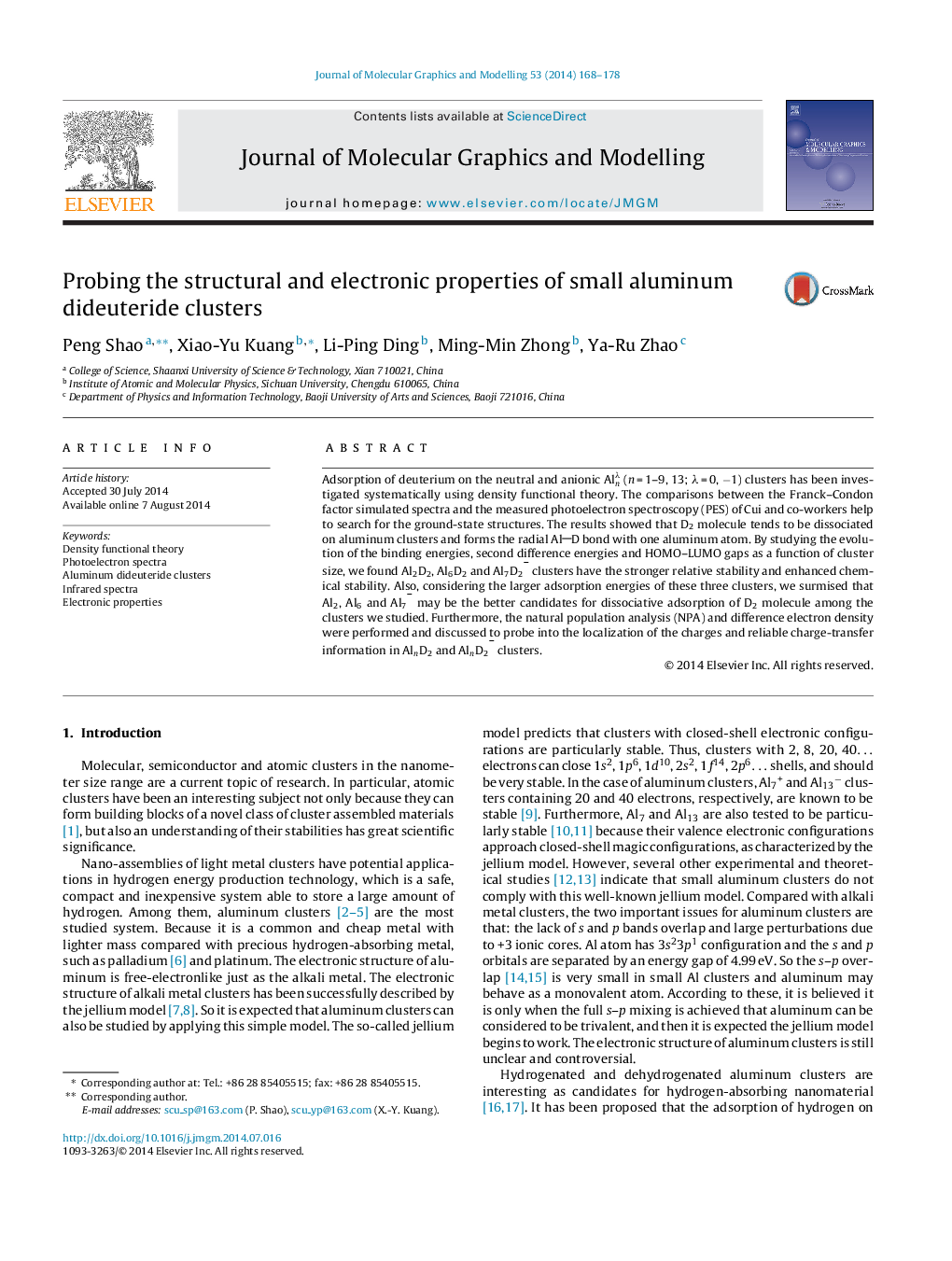| Article ID | Journal | Published Year | Pages | File Type |
|---|---|---|---|---|
| 443318 | Journal of Molecular Graphics and Modelling | 2014 | 11 Pages |
•The comparisons between simulated and measured spectra are performed.•D2 molecule tends to be dissociatively adsorbed on aluminum clusters.•Al2, Al6 and Al7̄ may be the good candidates for dissociative adsorption of D2.•The natural population analysis and difference electron density were discussed.
Adsorption of deuterium on the neutral and anionic Alnλ (n = 1–9, 13; λ = 0, −1) clusters has been investigated systematically using density functional theory. The comparisons between the Franck–Condon factor simulated spectra and the measured photoelectron spectroscopy (PES) of Cui and co-workers help to search for the ground-state structures. The results showed that D2 molecule tends to be dissociated on aluminum clusters and forms the radial AlD bond with one aluminum atom. By studying the evolution of the binding energies, second difference energies and HOMO–LUMO gaps as a function of cluster size, we found Al2D2, Al6D2 and Al7D2̄ clusters have the stronger relative stability and enhanced chemical stability. Also, considering the larger adsorption energies of these three clusters, we surmised that Al2, Al6 and Al7̄ may be the better candidates for dissociative adsorption of D2 molecule among the clusters we studied. Furthermore, the natural population analysis (NPA) and difference electron density were performed and discussed to probe into the localization of the charges and reliable charge-transfer information in AlnD2 and AlnD2̄ clusters.
Graphical abstractThe difference electron density for the AlD, Al2D2, Al6D2, and Al7D2̄ clusters.Figure optionsDownload full-size imageDownload high-quality image (165 K)Download as PowerPoint slide
